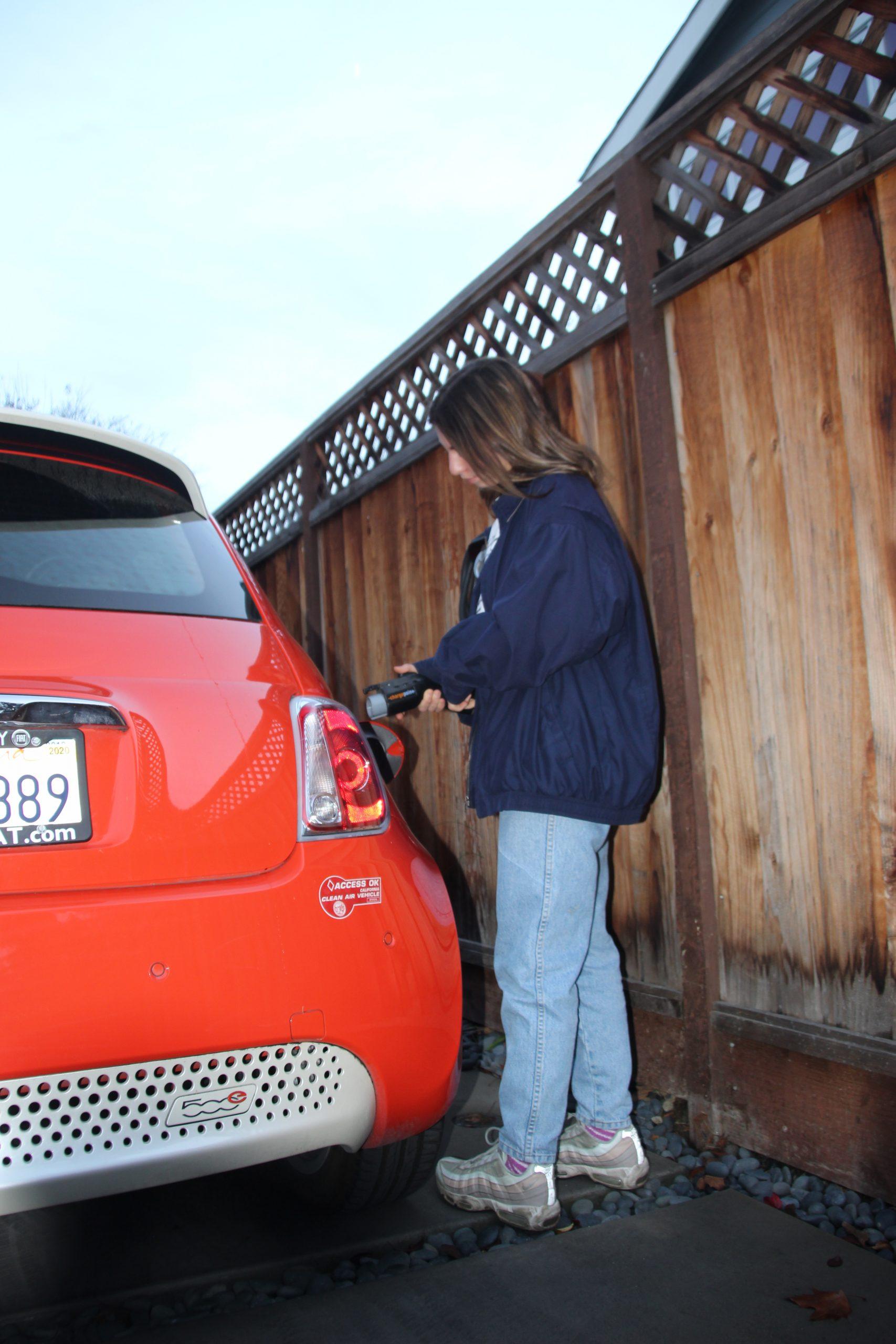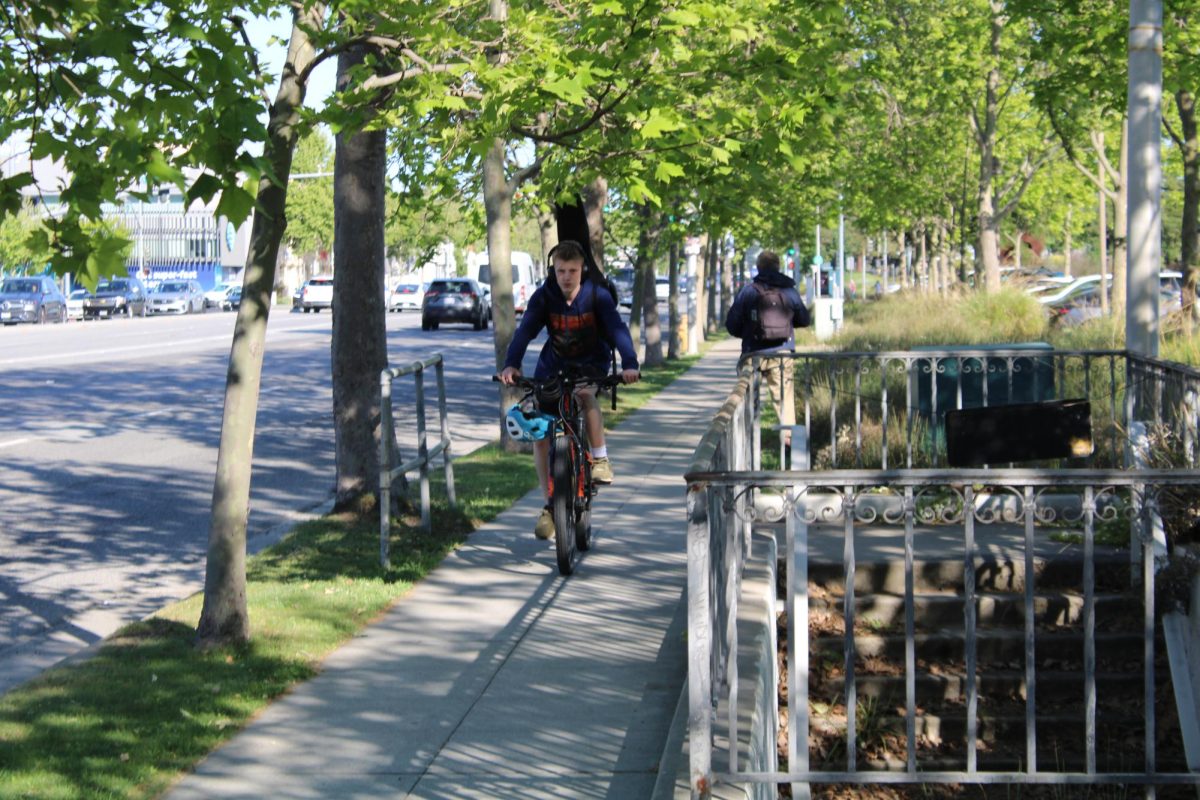Palo Alto City Council banned the use of natural gas in new residential buildings through a unanimous vote in hopes of lowering carbon emissions to combat climate change on Monday, Nov. 4.
According to Mayor Eric Filseth, the “Sustainable Building Electrification Plan” was conceived in order to meet the goal of reducing carbon emissions that Palo Alto adopted in 2013 in the “Sustainability and Climate Action Plan” to reduce carbon emissions.
“A few years ago, the city adopted a plan to reduce the city’s greenhouse gas emissions by 80% by the year 2030,” Filseth said. “We’re about half way there.”
In order to tackle the remaining half of greenhouse emissions, City Council created a plan that would reduce emissions in two major areas: natural gas use in homes and transportation.
“From the remaining emissions that we need to cut to hit that target, about 30% of it is natural gas use, primarily for cooking and heating,” Filseth said. “About 50% of it is transportation, mostly cars.”
According to AP environmental science teacher Nicole Loomis, the plan will encourage Palo Alto residents to use electricity.
“I think it provides people with an incentive to use solar because everything in their house will be electrical, so they would have things like water heating and heating the space, which uses a lot of energy,” Loomis said.
However, Loomis expressed concern that the electricity the city uses could actually emit an equal amount of carbon, depending on how the city gets its electricity.
“In terms of furnace efficiency (and) charging cars, there may be a benefit there,” Loomis said. “However, it does rely more on how our electric producers provide us with electricity, whether they are using renewable sources.”
Filseth believes this is only a good thing because residents using electric energy instead of natural gas reduces carbon emissions since Palo Alto’s electricity is completely renewable as of 2013.
“Palo Alto runs 100% green electricity, we do 100% renewable energy,” Filseth said. “We would like to see as much of the use of natural gas converted to electricity as possible because if you cook with electricity in Palo Alto there is no carbon footprint.”
The reason Filseth wants to use as much electricity as possible over natural gas is because using electricity in Palo Alto gives off zero carbon emissions as Palo Alto’s electricity is renewable.
“The conversion of our electricity and utility to 100% renewable sources is absolutely fundamental to our goal,” Filseth said. “So that’s the focus of the current plan, which is to encourage the use of electricity for heating and cooking, instead of natural gas.”
This plan will also encourage the use of electric cars, according to Filseth. Since transportation is the source of the majority of Palo Alto’s remaining carbon emissions, City Council believes the shift to electric vehicles will dramatically reduce emissions.
“One (method of reducing carbon emissions) is through the use of electric cars because (if) you charge a car in Palo Alto, it leaves no carbon footprint because we get our power from hydro and solar,” Filseth said.
Palo Alto is rapidly increasing its amount of electric vehicles, which helps to reduce carbon emissions. Filseth said that one in three new cars registered in Palo Alto are electric, and that rate is rising. The majority of these electric vehicle owners charge their cars at home.
However, not everyone has access to electric vehicles, which makes reaching the 2030 goal challenging.
“If you have your own single family home, it is pretty straightforward to install a charger and it doesn’t cost that much,” Filseth said. “However if you live in an apartment, it is very complicated to add your own charger. As a result, the overwhelming majority of electric vehicles are owned by single homed families and 40% of the market is basically shut off.”
To combat this, along with the electrification plan, City Council passed another law this year that aims to provide families living in multi-unit living areas the opportunity to use electric vehicles.
“City Council also passed a law that new multi-unit buildings have to wire three parking spots,” Filseth said. “They don’t have to add the charger but the wires have to be there. We hope this will remove the major obstacle of multi-unit buildings and open up the market to the 40%.”
According to Filseth, most Palo Alto residents have taken this new plan of action well, including junior and environmental science student Emma Cudahy, who thinks that the plan is a net positive despite the potential loss in efficiency.
“I’m assuming there’s going to be economic setbacks, but usually taking steps to reduce human impact on the environment results in that,” Cudahy said. “People have to think about how much they value the environment and what they’ll have to sacrifice for that.”
However, Loomis is concerned that this plan many not be the best move for the efficiency of heating Palo Alto homes.
“In terms of heating the space, I think if they’re going to require electrical heating, they really should also be requiring passive solar construction techniques because that reduces the need to heat the house,” Loomis said. “So insulation (and) having windows in the right place should be also required if they want to improve efficiency.”
Filseth acknowledges these concerns and says that electrical heating, when done right, is more efficient that gas.
“If you use a heat pump water heater under the right circumstances, that may be more efficient anyway than a gas heater,” Filseth said. “Heat pump technology is more efficient because instead of converting energy to heat you are just moving heat around, so it’s pretty efficient using that.”
Another challenge that will come with the implementation of this new plan is with regards to larger buildings. The electrical heating does not work as well with the extra space.
“There is still some dispute over exactly how scalable heat pump technology is,” Filseth said. “It’s clearly possible but within what constraints is still in question.”
California state laws have also been an obstacle the council has had to work around.
“The other issue we run into is that there are state laws that make this plan a little bit harder in certain buildings,” Filseth said. “But we expect those laws to change.”
Many Palo Alto residents also are hesitant to switch to electric stoves since they have been using gas stove their whole life.
“Personally I would be sad if I couldn’t use a gas stove to cook on,” Loomis said.
Despite the unease, Filseth assures that there are other methods of electrical cooking that will work just as well.
“There is something called induction cooking which is different from electric stoves,” Filseth said. “Induction cooking works pretty darn well. Most people who try it go, ‘Oh yeah this is good’ in any case it’s faster than gas.”
In this age of climate change, Palo Alto is just one of many cities that are making the adjustment.
“Other cities are already doing it,” Filseth said. “Berkeley has already cut back, San Jose has started cutting back, so I think you are going to see this statewide, but it’ll be a little bit more effective in Palo Alto since we are 100% renewable energy.”
Cudahy agrees and believes Palo Alto will serve as an example for neighboring cities.
“I think other cities will follow in Palo Alto’s footsteps,” Cudahy said. “A lot of cities are trying to turn away from some of the things that have a lot of harmful environmental impacts and seeing another city doing it makes it a lot more possible.
While it may be difficult for Palo Alto residents to adjust to these changes, ultimately Filseth believes most residents agree with the plan.
“You look around the state is burning down, sea levels are rising, you got smog in the air,” Filseth said. “Most people believe in climate change and know we are going to have to make some accommodations.”









